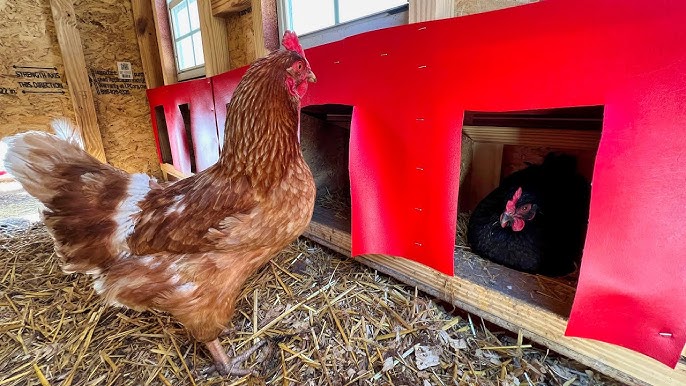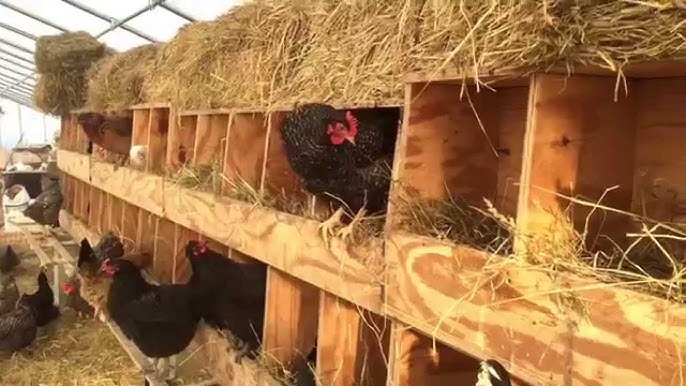When raising chickens, providing them with a suitable nesting environment is crucial. But what makes a good chicken nesting box? Understanding the key elements of a well-designed nesting box ensures your chickens are comfortable and productive. Let’s delve into the essentials.

Importance of a Proper Nesting Box
Nesting boxes are vital for egg-laying hens. They provide a safe, comfortable space for hens to lay eggs, reducing the risk of broken or dirty eggs. Additionally, a well-designed box can minimize stress and encourage hens to lay eggs regularly. Learn more about nesting boxes.
Ideal Size for Nesting Boxes
The size of the nesting box is critical. A typical box should be about 12x12x12 inches, providing enough room for hens to move comfortably. This size ensures hens can turn around easily, preventing them from feeling cramped.
Material Considerations
Choosing the right material for your nesting box is essential. Wood is commonly used due to its durability and insulation properties. However, plastic or metal can also be viable options. Each material has its pros and cons, impacting the comfort and safety of your hens.
Wooden Nesting Boxes
Wooden boxes are traditional and offer excellent insulation. They keep hens warm in winter and cool in summer. However, they can be more challenging to clean and may harbor pests if not maintained properly.
Plastic and Metal Alternatives
Plastic and metal nesting boxes are easier to clean and less likely to harbor pests. They are also more resistant to moisture, making them a good choice in humid climates. However, they may not insulate as well as wooden boxes.
Placement and Accessibility
The placement of nesting boxes is crucial for ease of access and hen comfort. Boxes should be placed at a height that is easy for hens to reach, and they should be easily accessible for egg collection. Check out nesting box ideas.
Height and Arrangement
Nesting boxes should be placed at a height of about 18 inches off the ground. This height prevents predators from reaching the eggs while allowing hens to jump into the boxes easily. The arrangement should allow for multiple hens to lay eggs simultaneously without overcrowding.
Comfort and Bedding
Comfort is key to encouraging hens to use the nesting boxes. The right bedding can make a significant difference. Straw, hay, or wood shavings are popular bedding choices, providing a soft and clean environment for egg-laying. Discover easy nesting box setups.
Bedding Choices
Straw and hay are traditional bedding choices, offering softness and insulation. Wood shavings are another excellent option, as they are absorbent and easy to clean. Regularly changing the bedding ensures hygiene and comfort for hens.
Ventilation and Light
Proper ventilation is crucial for maintaining a healthy environment in the nesting boxes. Adequate airflow prevents the buildup of moisture and ammonia, which can harm hens. Additionally, ensuring enough light in the coop encourages hens to lay eggs regularly.
Security from Predators
Ensuring that nesting boxes are secure from predators is essential. Boxes should be sturdy and well-protected to prevent access by pests and larger predators, safeguarding both hens and eggs.
Cleanliness and Maintenance
Maintaining cleanliness in the nesting boxes is vital for the health of your flock. Regular cleaning prevents the spread of disease and keeps hens comfortable. Implementing an easy-to-clean design can simplify maintenance.
Cleaning Routines
Regularly remove old bedding and clean the boxes with a mild disinfectant. This routine helps maintain a healthy environment, reducing the risk of disease spread among your chickens.
Number of Nesting Boxes Needed
The number of nesting boxes required depends on your flock size. Generally, one box per four to five hens is sufficient. Having enough boxes prevents competition and stress among hens.
DIY Nesting Box Options
For those who enjoy DIY projects, creating your own nesting boxes can be a cost-effective solution. Using recycled materials like old crates or barrels can be both economical and environmentally friendly.
Common Mistakes to Avoid
Avoid common mistakes when setting up nesting boxes, such as improper sizing, inadequate bedding, and poor placement. Addressing these issues ensures your chickens have a comfortable and productive nesting environment. Learn about chick brooder setups.
Seasonal Adjustments
Adjusting nesting box setups according to seasons can enhance comfort and productivity. In winter, ensure boxes are well-insulated, while in summer, focus on ventilation and cooling.
Conclusion
Understanding what makes a good chicken nesting box is essential for any chicken owner. By focusing on size, material, placement, and maintenance, you can create a comfortable and productive environment for your hens. A well-designed nesting box not only benefits your chickens but also enhances your egg production.

FAQs
How many nesting boxes do I need for 10 hens?
For 10 hens, 2 to 3 nesting boxes are usually sufficient to prevent competition and stress.
What is the best material for a nesting box?
Wood is a popular choice due to its insulation properties, but plastic and metal are also good options for ease of cleaning.
How often should I clean the nesting boxes?
Cleaning should be done regularly, ideally once a week, to maintain hygiene and comfort for your hens.
This article contains affiliate links. We may earn a commission at no extra cost to you.











